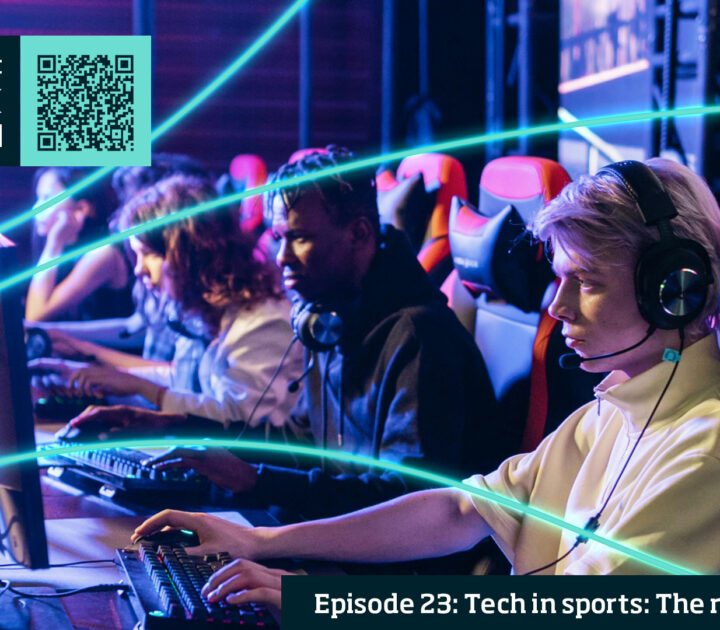Leading virtual teams 2.0

More than ever before in our professional lives, we are forced to work remotely – which for many of us also means leading in a virtual space. From missing non-verbal cues to miscommunication to lost momentum, complications abound.
In this session, which appeared live on 15th May, Jennifer Jordan, IMD Professor of Leadership and Organizational Behavior, explores best practices for leading a virtual team and tips on how you can achieve an equal (if not higher) level of engagement and effectiveness when working in a virtual environment.
Compared to virtual teams, face-to-face teams have several advantages. There is less room for miscommunication and there is greater shared warmth and social camaraderie.
“Face-to-face teams are better able to make use of non-verbal cues and behaviors,” says Professor Jordan. “In my team meetings here at IMD, we have a rule: if one person’s camera is on, then everyone’s camera is on.”
And lastly, there is less disjointed, asynchronous rhythm to communication, which can lead to lost momentum and increased detachedness.
Professor Jordan explains the two main types of information sharing: unique and open. Whereas unique information sharing (UIS) is sharing information specifically about the task at hand, open information sharing (OIS) is sharing any information amongst members – sometimes information that has no relevance to the task at hand.
Paradoxically, while OIS better predicts team effectiveness because it helps bond team members and creates greater camaraderie, it is exactly the type of information sharing that virtual teams do less of. Virtual teams have the tendency to be highly task oriented; to focus on what needs to be done rather than how it is being done. This can be an advantage, as there is less distraction in virtual teams.
However, it can also be a disadvantage.
Leaders of virtual teams can encourage more OIS by requiring every team member to share something funny that happened to them in the last three days or starting a Trello board where team members can post articles, memes or other funny material.
“The leader should also be the one to ‘set the tone at the top’ by openly discussing non-task-oriented information,” says Jordan. “Asking your team what they had for dinner or what they are watching on TV can strengthen bonds.”
One of the advantages that a perceptive leader has in working with a face-to-face team, is that he or she can detect the emotional tenor of the team and individual members.
This ability for a leader to take the emotional “pulse” of a team is critical for successful team functioning, as it provides valuable data about the health of the team and their engagement. Such information provides the leader with week-by-week fluctuations in how the team feels, while also allowing the leader to keep track of members who might be feeling disenfranchised from others or discouraged about recent events.
In a virtual team, this is much more difficult to do. Professor Jordan suggests using what are known as “experience sampling apps” to allow team members to register how they are feeling about the team and the team’s work at various, sometimes random, points in the workday.
Touching on the differences between introversion and extraversion, Professor Jordan says people tend to assume that introverts function better than extraverts in virtual teams, but this is not what the research indicates.
“As extraverts crave human interaction and actually require it to stay motivated,” says Jordan, “they are more likely to reach out to team members more regularly and stimulate interaction.”
When interacting virtually, avoidance, accommodation, competition, collaboration, compromise all come into play. In the virtual world, being competitive can often be advantageously mistaken for mere involvement, whereas more cooperative approaches, like compromise, can be misperceived as being uninvolved and disengaged.
Just like an actor on stage, emotions in the virtual world must be exaggerated into order to get the point across. Consider setting an example of the tenor you expect from your team by taking your involvement up a notch, so people feel more engaged; lean on the side of activity rather than passivity, even if it veers into the territory of being competitive.
By keeping these issues in mind, team leaders can get around the current hurdles in order to reach their desired results – both in terms of task and team spirit.
Research Information & Knowledge Hub for additional information on IMD publications
Many executives say they don’t have time for mindfulness practices, such as daily meditation. An alternative is micro-presence: weaving moments of ...
The increasing datafication of the workplace is often cast as a means of imposing organisational and managerial control on workers. This reflection...
Technological innovation, advances in remote work, and reshaped post-pandemic priorities have led to companies hiring fractional leaders, or part-t...
Research Information & Knowledge Hub for additional information on IMD publications
Research Information & Knowledge Hub for additional information on IMD publications
Research Information & Knowledge Hub for additional information on IMD publications
in I by IMD 5 July 2024
Research Information & Knowledge Hub for additional information on IMD publications
in Scandinavian Journal of Information Systems July 2024, vol. 36, no. 1, article 2
Research Information & Knowledge Hub for additional information on IMD publications
in HBR.org 2 July 2024
Research Information & Knowledge Hub for additional information on IMD publications
in I by IMD 28 June 2024
Research Information & Knowledge Hub for additional information on IMD publications
in I by IMD 27 June 2024
Research Information & Knowledge Hub for additional information on IMD publications
Research Information & Knowledge Hub for additional information on IMD publications
Research Information & Knowledge Hub for additional information on IMD publications







